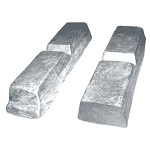ANODIZING & COATING
ANODIZING
Anodizing is an electrochemical process that converts the metal surface into a decorative, durable, corrosion-resistant, anodic oxide finish. Aluminum is ideally suited to anodizing, although other nonferrous metals, such as magnesium and titanium, also can be anodized. The anodic oxide structure originates from the aluminum substrate and is composed entirely of aluminum oxide. This aluminum oxide is not applied to the surface like paint or plating, but is fully integrated with the underlying aluminum substrate, so it cannot chip or peel. It has a highly ordered, porous structure that allows for secondary processes such as coloring and sealing. Anodizing is accomplished by immersing the aluminum into an acid electrolyte bath and passing an electric current through the medium. A cathode is mounted to the inside of the anodizing tank; the aluminum acts as an anode, so that oxygen ions are released from the electrolyte to combine with the aluminum atoms at the surface of the part being anodized. Anodizing is, therefore, a matter of highly controlled oxidation—the enhancement of a naturally occurring phenomenon.
PLUS POINTS:
Protects cookwares from the harsh environment.
Provides attractive, minimum-maintenance, highly durable exteriors
NON STICK
A non-stick surface is a surface engineered to reduce the ability of other materials to stick to it. Non-stick cookware is a common application, where the non-stick coating allows food to brown without sticking to the pan. Non-stick is often used to refer to surfaces coated with polytetrafluoroethylene (PTFE), a well-known brand of which is "Teflon." In the twenty-first century other coatings have been marketed as non-stick, such as anodized aluminium, ceramics, silicone, enameled cast iron, and seasoned cookware.
ALUMINIUM INGOTS AND ALUMINIUM CIRCLES

Aluminium Ingots
An ingot is a piece of relatively pure material, usually metal, that is cast into a shape suitable for further processing. In steelmaking, it is the first step among semi-finished casting products. Ingots usually require a second procedure of shaping, such as cold/hot working, cutting, or milling to produce a useful final product. Non-metallic and semiconductor materials prepared in bulk form may also be referred to as ingots, particularly when cast by mold based methods. Precious metal ingots can be used as currency (with or without being processed into other shapes), or as a currency reserve, as with gold bars.

Aluminium Circles
Aluminum circle, as aluminum disc ,is widely used in making aluminum cookware, as aluminum sauce pan, pizza pan ,utensils application .It is normal with thickness from 0.3mm--10mm,diameter from 100mm-800mm.When it comes to the process of producing, aluminum circle is usually directly cutting from aluminum coil or the aluminum plate, usually, if the thickness of aluminum circle is less than 3.0 mm, the form of piercing blank feeding directly will be applied. If the thickness of aluminum circle is between 3.0 mm and 100 mm, according to the precision demands, aluminum circle board face demands, the bar cutting, laser cutting, CNC water cutting, cutting will be used for blank feeding production. When the thickness of aluminum circle is higher than 100 mm, the manufacturer usually adopts aluminum rod sawing for production directly, special circumstances will adopt CNC water cutting and cutting precision processing mode.
The producing process of aluminum circle is as follows:
1. cutting the blank
cut the blank into square shape.
2. blank feeding
Fully automatic blanking production line processing: aluminum circle open-book blanking production line is fully automatic integration of aluminum circle production equipment, it can directly punching circle blanking on the aluminum coil, with out shearing and slitting process, the products widely used in aluminum processing manufacturing cookware with tensile aluminum circle.
Aluminum circle open-book blanking production line’s mainly equipment are: feeding trolley, un-coiler, leveling machine, feeder, swing unit, special closed single point of mechanical press and quick die change equipment, pallet units, aluminum roll slitting machine scrap shear, hydraulic system, electrical control system, etc.